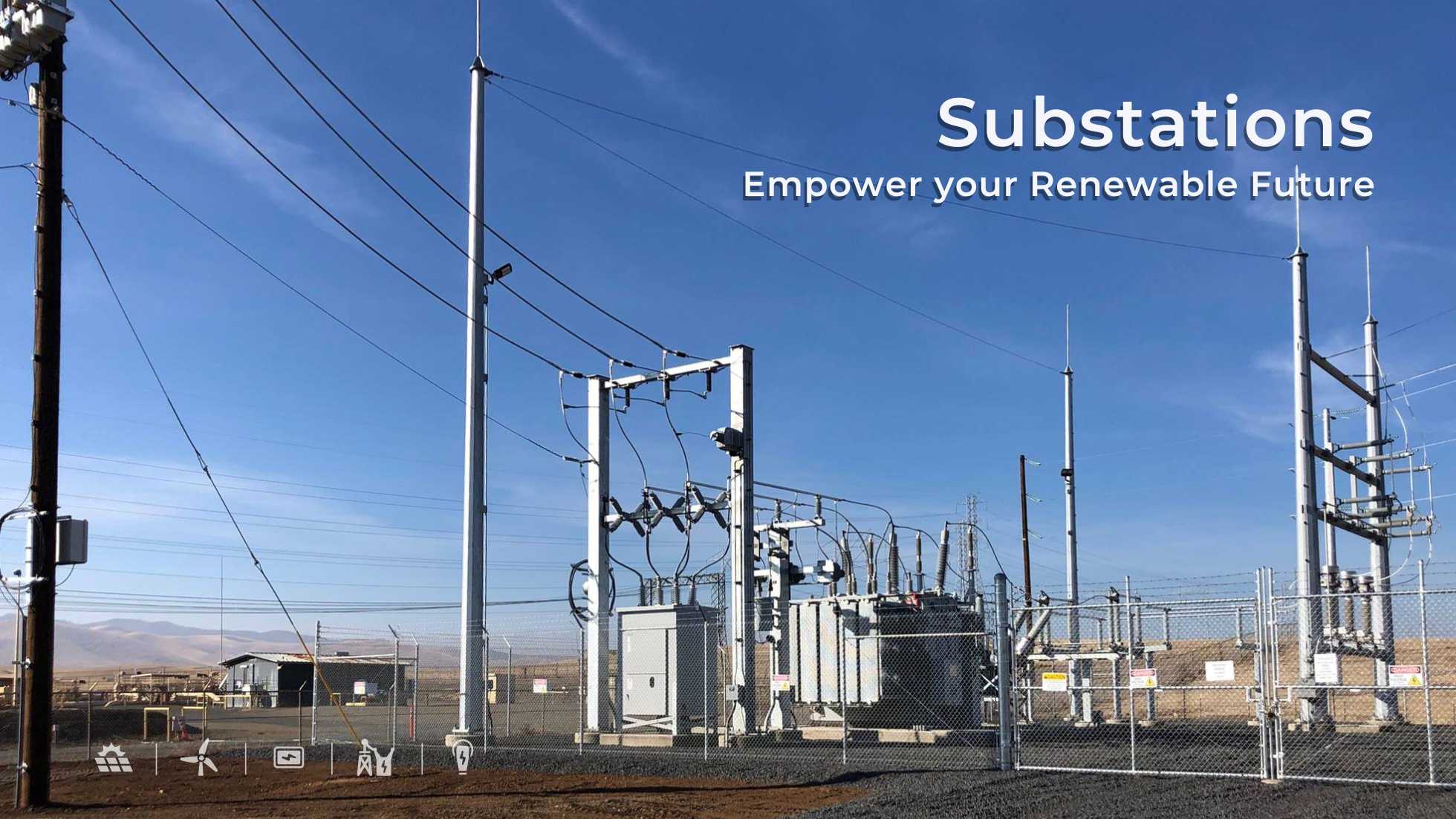In the realm of renewable energy, substation might not be a term that immediately comes to mind. However, these crucial components are vital in generating, transmitting, and distributing electricity from renewable sources. But what are substations, how do they function, and what is their significance in the renewable energy landscape?
What are Substations?
Substations are integral parts of the electrical grid, acting as hubs where electricity is transformed, switched, and controlled. They serve as connection points between different voltage levels in the grid, facilitating the efficient transmission and distribution of electricity to homes, businesses, and industries.
At a basic level, substations perform two primary functions:
Voltage transformation: Substations convert electricity between different voltage levels to ensure efficient transmission and distribution. This transformation is essential for transporting electricity from power generation facilities to end-users.
Switching and control: Substations contain switches, breakers, and other control devices that enable operators to manage the flow of electricity within the grid. This includes isolating faulty equipment, rerouting power during maintenance, and adjusting voltage levels to meet demand.
The Role of Substations in Renewable Energy
In the context of renewable energy, substations play a critical role in integrating electricity generated from renewable sources into the grid. Here’s how:
Connecting renewable energy facilities: Substations serve as connection points for renewable energy facilities, such as solar farms, wind farms, and hydroelectric plants, to the grid. They feed the power generated at these facilities into the grid, transforming it to match the voltage of the transmission network.
Managing variable energy production: Renewable energy sources like solar and wind can vary depending on weather conditions and time of day. Substations help manage this variability by regulating the flow of electricity and balancing supply and demand within the grid. Additionally, advanced technologies in modern substations facilitate real-time monitoring and control, enhancing grid stability and reliability.
Enhancing grid resilience: Substations contribute to grid resilience by providing redundancy and backup capabilities. In the event of a power outage or equipment failure, substations can reroute electricity and isolate affected areas. This way they minimize disruptions and restore power quickly.
Did you know there are substations built underground?
Substations don’t always require giant fenced enclosures. There are entire substations built underground! These underground substations are typically used in densely populated or sensitive areas where a large, fenced structure wouldn’t be ideal.
Building underground offers several advantages, such as minimized footprint, improved aesthetics, and potentially quieter operation. However, there are also downsides to consider: higher prices, complex maintenance and repairs, underground space requirements, and proper safety protocols.
Located in Anaheim, California, the Park Substation marks the first-ever underground electric substation built beneath a park in the United States. Completed in 2006, it provides power to the surroundings, saving surface space for a pleasant park area for the community.
Substation Solutions for Renewable Energy
Through strategic partnerships and cutting-edge projects, BEI Construction is driving the transition to a cleaner, more sustainable energy future, developing and implementing innovative substation solutions to support the integration of renewable energy into the grid.
For example, at the Aquamarine Westside Solar Complex (Stratford, CA), BEI Construction partnered with Solv Energy to construct a 230kV substation for the solar complex. Similarly, at the Central 40 Solar Project (Newman, CA), BEI Construction was key in building the utility-scale solar facility. It also includes designing and constructing a substation to connect the 50.3 MWdc solar PV power project to the grid. This is a prime example of BEI Construction’s ability to deliver comprehensive solutions for renewable energy integration.
Therefore, through these projects and others, BEI Construction is playing a pivotal role in advancing the adoption of renewable energy. The company is also building a more resilient and efficient electrical grid for future generations.
